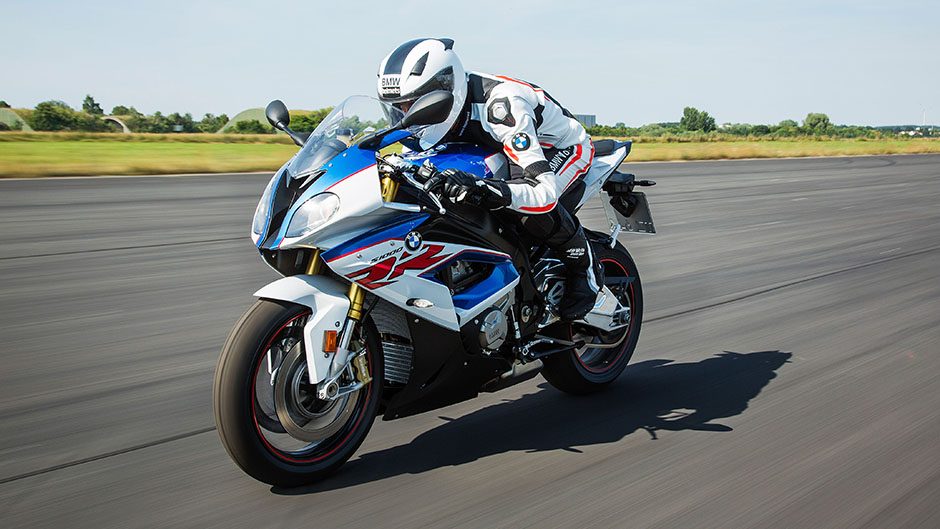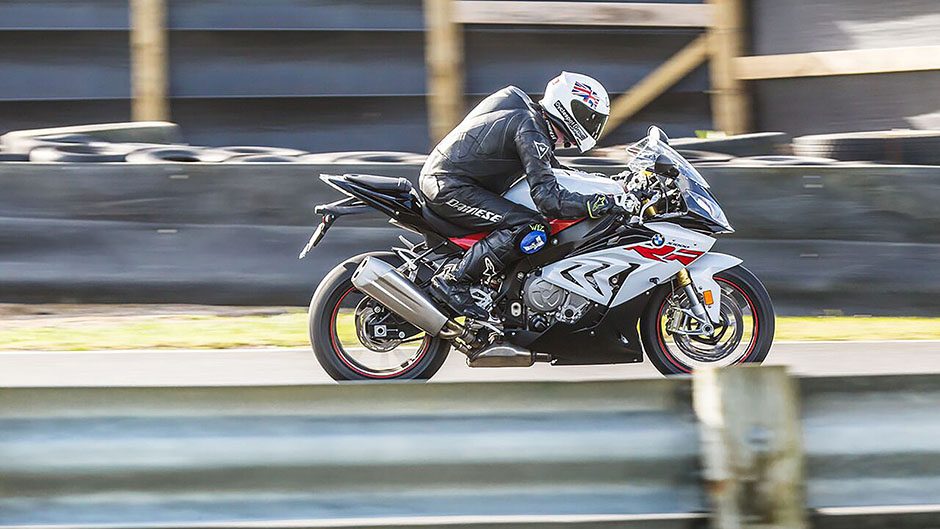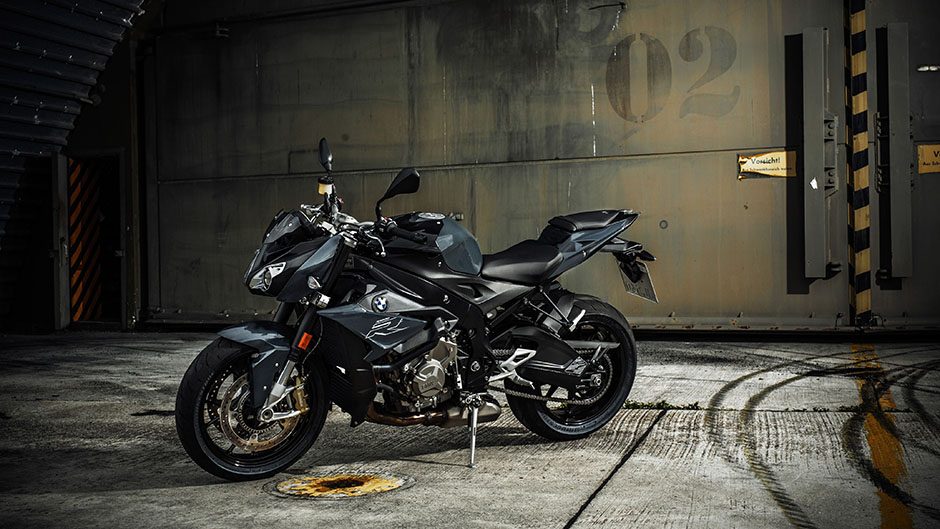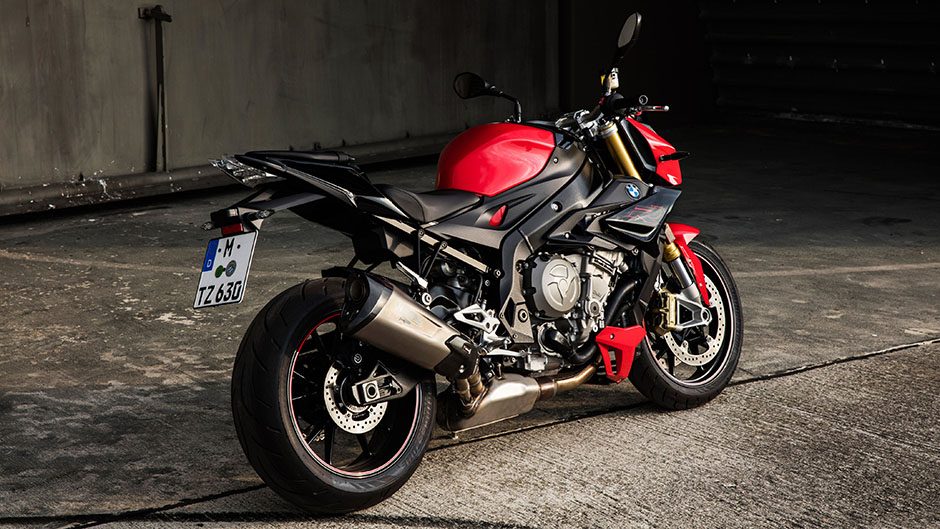Winter superbike introductions are ‘fun’ affairs; there’s generally lots at stake, especially when the weather report is dodgy. Come the day and we’re driving through the back roads to the Hampton Downs circuit, the hills scoured by recent slips, the wipers and lights on, and our SUV du jour is slithering about nervously which makes two of us.
However, we’re buoyed by a change in the sky out west and by the time we arrive it’s no longer hosing down, even if the circuit is sodden. Hampton Downs dries out quite quickly, providing the rain abates, and by lunchtime we’ve ridden Aprilia’s updated 2017 RSV4 RR and its stablemate the upright Tuono V4 1100 RR (next month).
Following a brief lunch break we leathered up once again for a session aboard BMW’s 2017 model year S 1000 RR and also got to check out how the S 1000 R supernaked performed, a model I’d not previously ridden.

In the garage it’s not the superfasts we’re eyeing up but two other new models from BMW that have recently arrived on the scene, the new R NineT-based Racer ($23,990) which looks like a modern version of a race bike from the 70s, and the smallest cheapest BMW ever to come out of, er, India, the G310.
Resplendent in blue, white and red BMW race livery the new G310 LAMS bike has an RRP of $7999, and could prove to be its biggest seller given the learner market still seems to be growing strong. Globally it may take over from the R1200 GS as Motorrad’s best mover.
Here in New Zealand it’s hard to know, given how competitive the entry-level LAMS market is but the dealers are crying out for more stock, so we’d guess there’s plenty of interest in the machine. It is months overdue, and while BMW is staying mum about the reason for the delay, it’s a good guess quality control from the Indian factory wasn’t initially up to scratch.

Good on them for delaying things and making it right, because this first example looks lovingly built. It’s cute too, feels delightfully lightweight in that single cylinder way, and the price seems aggressive, around the same money as twin-cylinder 300s. A Beemer for under $8k? What’s not to like?
Anyhow, we’re not here to gawk and soon the Tannoy blares and we’re to select our weapon. This time we’re aboard the $29,990 S 1000 RR and instantly it’s apparent this is rather different from the RSV4.
Naturally it sounds dissimilar, more like a screamer than a big bang engine, if you liken them to MotoGP mills. The inline four revs thrillingly and slightly higher, in both revs and frequency; there’s not the bass impact of the Aprilia’s V4. The electronic suspension feels a bit more supple too. And compared with the uncompromisingly racy RSV4, the BMW has a more open riding position and the old neck injury isn’t causing as much grief. Right from when it first set the superbike scene on its ear back in 2010 the S 1000 RR has been regarded as amongst the most forgiving of its genre and for some strange reason it can seem a bit less threatening to ride in anger.

We noticed that at its launch, pounding around Phillip Island, and that characteristic has carried down through the years. It seems you can get to grips with it more quickly than the others, though why that should be is a bit of a mystery. Whether it’s the engine characteristics, the safety electronics, the chassis, the riding position or a mix of all four, it just seems to put you at ease. Anyhow on the second lap we’re instantly hitting 200km/h on the short straight after turn 5, at the top of third gear, and heading up the start finish straight we manage a new personal best top speed before the braking area, an indicated 257km/h showing.
Perhaps the extra wriggle room allowed me to snuggle behind the screen more easily. Either way, lots of brake is needed at the end of the straight to slow sufficiently for the right hand descent into turn one. Another rider, heavier and faster than me, reckoned he experienced brake fade at the end of the session but he was probably utilising full race ABS braking at every opportunity. I tend to aim below that and experienced no such fade issues; the monobloc Brembos were only ever potency personified in my mitts.
Quickshifter technology has advanced, er, quickly in recent years to the point where all four machines we rode on the day have bidirectional devices, and they’re just brilliant on track. Essentially you use the clutch to get underway in pit lane and don’t ever use it again until you slow to dismount. So heading into each corner you brake hard and bang down the box until you hit the appropriate gear, first on the two tighter turns, four and five, of the original track, and second gear for the others. I missed one downshift on the BMW, two on the Aprilia, each time searching for first and just not being aggressive enough and picking up neutral.

These devices blip the throttle automatically so you don’t need to match engine revs to track speed as you downshift. That means you can focus better on when to brake and tip in, which line to take etc. It’s all in the interest of reduced lap times. In terms of handling the Aprilia feels a little more like a race bike, stiffer, and a bit heavier to steer, but with fabulous stability at speed.
The BMW feels lighter to turn, and is a bit less rock-like at speed but nor is it unnerving. After a short break the $24,990 R model beckons. This has been more extensively updated for 2017, with a touch more power, now out to 165hp and 113Nm arrives at 9250rpm, so it has precisely as much torque as the superbike. Chassis updates cull 2kg of weight, a new Akrapovic can helps it meet Euro4 status, and there’s a bidirectional quickshifter.
Rubber mounts for the handlebar evidently dial out the vibrations that irked with the original. On track it feels almost as quick as the RR, and that’s confirmed on the speedo. It too can hit 250 clicks up the hill. With the extra bar leverage it tips into turns more easily, but it’s not quite as stable under full gas out of the slower turns, probably because you’re not weighting up the front wheel as much. So it just wants to paw the air on the gas. We leave the antiwheelie device on, sticking to Sport rather than the Track mode which dials the electronics down.
Most prefer the S 1000 RR on track, as do I, but the R is only a few percentage points down on outright lap times, and would be a better all-round mount if you plan on commuting, fanging about, and taking the bike to the track now and again. Both the bikes even have cruise control which is a blessing on machinery this fast. Next issue it’s the turn of the Aprilias, the RSV4 RR and Tuono V4 1100 RR at the Hampton Downs circuit.


